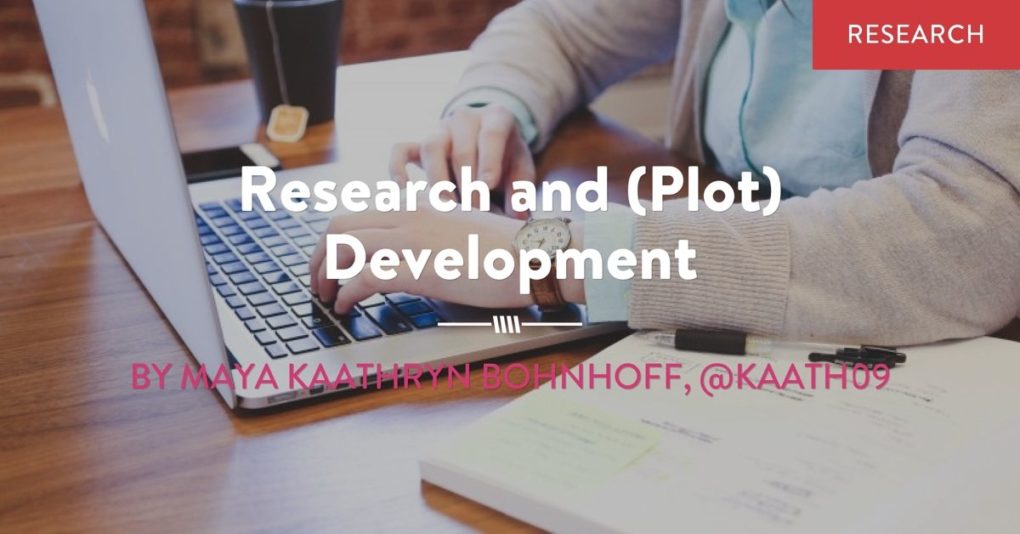by Maya Kaathryn Bohnhoff, @kaath09
Hello, my name is Maya Kaathryn Bohnhoff, and I’m a recovering research-aholic.
I know that research addiction is common among writers of speculative fiction (genres that begin with ”what if…?”). This doesn’t mean there aren’t writers who hate research with a passion, but whether you loathe research or love it, it is necessary to writing fiction. It stands to reason that the ideal is to strike a healthy balance between diving so deeply into the ocean of knowledge that you drown, or barely dipping a toe into the pool.
Perhaps the first thing I learned about research (besides that it tastes like chocolate) is that it’s not restricted to finding facts about reality that you need to know before or during the writing of your book.
I write a number of genres: science fiction, fantasy, magical realism, alternate history, steampunk and, most recently, mystery-detective fiction. This is not to say that my journey toward publishing my first detective novel (THE ANTIQUITIES HUNTER) began recently. Preparing to write this article, I dug up my earliest notes on my Japanese-American P.I., Gina Miyoko. They date from the late 90s. Long enough ago that while I know Gina was conceived in a dream—as is a lot of my fiction—I don’t remember the dream itself.
What my old handwritten notes tell me is that the first point of research was not about how police departments are structured or what resources a P.I. might have at her disposal, but about my detective herself. I had many pages of notes that included such big ticket items as what things and people she loved, what trauma she had endured, what her educational background was, and how she got her nickname “Tinkerbell.” It also included a lot of minutiae: What was her favorite candy, color, rock band? What gun did she own and why?
Did I go a bit overboard? Maybe. I hadn’t yet learned that too much upfront research can lead to prose paralysis, and that many of the things that make a character who they are must be discovered in the course of writing about them. I wrote a lot about Gina before I began to write Gina.
This raises a frequently asked question: ”When should I stop doing research and start writing?”
The question supposes that the two are separate activities and that one ends where the other begins. I have not found this to be so, for the simple reason that when I sit down to start a book, I don’t know what I don’t know. For me, the transition from research to writing happens organically. At some point in my feasting on information, I literally get an almost electric rush that makes me want to start writing scenes. It may be the opening paragraph of a story or a dialogue from somewhere further in. Or it may be observations about a character only some of which will end up in the book. I write until I feel as if I need more information, then stop and do research until that feeling happens again.
As I hinted at above, I’ve found that my research falls into two broad categories:
- Exterior research, in which I collect facts from the real world in a variety of forms.
- Interior research, in which I dig around in my own experience and imagination.
I love archaeology and have subscribed to Smithsonian, Archaeology, and even KMT (an Egyptology zine). The plot spine of THE ANTIQUITIES HUNTER is about the trade in blackmarket artifacts stolen from under-protected historical sites in the U.S. and Mexico. The generating spark of that was exterior research. Specifically, an article from Smithsonian magazine on a female undercover National Park Service agent. It not only gave me the framework for what would become Gina’s first major case, but also contributed heavily to the character of her best friend, Rose, who is—you guessed it—an NPS agent.
Because I wanted Rose to be personally invested in her work, she became Hopi. That sent me off down another research road. I needed to know about Hopi culture as Rose would have experienced it growing up, and as Gina would experience it as an intimately connected outsider.
I also had to know about the sort of artifacts Rose might be called upon to protect, which led to another avenue of research related to First Nations artifacts and actual cases involving their theft.
When the story extended into the Mexican state of Chiapas and an semi-invented ruin, more research followed—both regarding modern-day Mexico and ancient history.
In doing this research I used a host of resources, including:
- The internet (no, do not stop at Wikipedia) – I especially seek out images, so I can see what I’m writing about from every available angle. Being able to describe a place vividly helps your reader immerse herself in your world.
- Archeology magazines with stories of real finds and legal cases involving antiquities.
- Videos about archaeological digs.
- Books on archaeological methods and tools.
- Visits to museums and locales.
Obviously, these areas of research necessary were specialized to my plot. In general, I found a detective or mystery novel required me to research such things as:
- Locations, topography and weather
- Weapons and ballistics – If you can, handle and fire the weapons you choose. My oldest daughter was about the same size as my diminutive detective, so we took target practice so I could see if the gun I wanted Gina to use would work for a woman her size.
- Communication technology – Smartphones can make writing mystery fiction harder if your plot revolves around characters being cut off from civilization.
- Law enforcement practices and hierarchies in your target locale – not all police departments are created equal.
- Martial arts – because every form has its own moves.
- Poisons and medical knowledge – Arsenic may be old-hat, but drug interactions are sometimes fatal.
When do you do this research? When you need it to fill in your story or feed your imagination.
Which leads me to internal research. I knew I didn’t want Gina to be just one more tragically broken and lonely female detective. I wanted her to have experienced hardship, yes, but also to have a functional, if quirky, support system. In writing her parents, Edmund and Nadia, I did a lot of ”research” in my own childhood, hence Ed views his wife as ”the smart one” because of her academic background; she believes he has the real smarts because he’s intuitive and balanced.
Nadia’s character, alone, led to researching magic in the Russian Orthodox Church, Orthodox churches in the North Bay, and oberegi (the good luck charms Nadia is forever sticking into her daughter’s pockets).
That research, in turn, led to me pulling ”books” from the shelves in my imagination to make Nadia, Ed and Gina richer, deeper characters, which led to new plot developments, which led to….
Well, you get the picture. One act of research inevitably leads to another as each piece you add to your story puzzle from the real world causes your plot to thicken and your characters to grow lives of their own.
 Writer of speculative fiction as the result of a horrible childhood incident involving Klaatu and a robot named Gort, Maya is the New York Times bestselling author of science fiction, fantasy and now mystery.
Writer of speculative fiction as the result of a horrible childhood incident involving Klaatu and a robot named Gort, Maya is the New York Times bestselling author of science fiction, fantasy and now mystery. 


Maya you have written a variety of genres.
I usually don’t do much research before I begin writing. I tried that with my last book and wound up with way more information on sea kelp than any human has a right to know.
Thanks for the post today, Maya!
And Alex, you made me laugh this morning. :)
What a great reminder to put research in perspective. I sometimes find myself going down that ‘rabbit hole,’ too, and it can distract from writing. At the same time, it’s interesting, and a good book needs to be credible – hence, research. I think it’s the balance that counts.
You’re so right–it’s easy to be distracted! I’m researching for a new series now and had to put an end to research to move the project forward.
I find that no research that I do is ultimately a waste of time. I always find things in the Rabbit Hole that are useful elsewhere. In fact, it never fails that research I did for one book or story comes in handy for another—often it seems to be the very next project I undertake.
I recently found some of the research I did for THE ANTIQUITIES HUNTER fed right into a ghostwrite I’m working on right now, while some of the arcana I collected was useful for a YA fantasy I wrote.
Love this. When I conceived the idea for my latest series (science fantasy/alternate world, something I’d never done before), I knew I needed to get multiple jumping off points to make my world richer, if not necessarily “realistic”. I loved reading about military history (who knew?), history of seafaring, “unsolved” ancient disasters, and then the New Oxford World History series. I also thoroughly enjoyed reading more fantasy, particularly historical fantasy, even though that’s not the subgenre I’m writing. But, yes, about halfway through it was as if I had a switch click and I was ready to start delving into my characters and my world. The research continues off and on, but it’s more to feed my imagination in general, not to supply specifics.
I can’t help but feel that even if the research doesn’t enrich a specific project, it can really help to inform us overall and make us better writers. At least, that’s my excuse and I’m sticking with it! :)
Yes, that’s what I tell myself when I settle in for 125 pages of reading when I could theoretically be writing :-)
Too funny! :)
Hi Maya,
Great article. I liked learning how research fed into your writing and vice versa. I’m also curious about how Gina got her nickname!
~ Alex ~
I must echo Elizabeth. Your comment about sea kelp made me grin :)
It tickled me, although why I found knowing too much about sea kelp funnier than knowing too much about how libraries work (my current research) is a mystery!